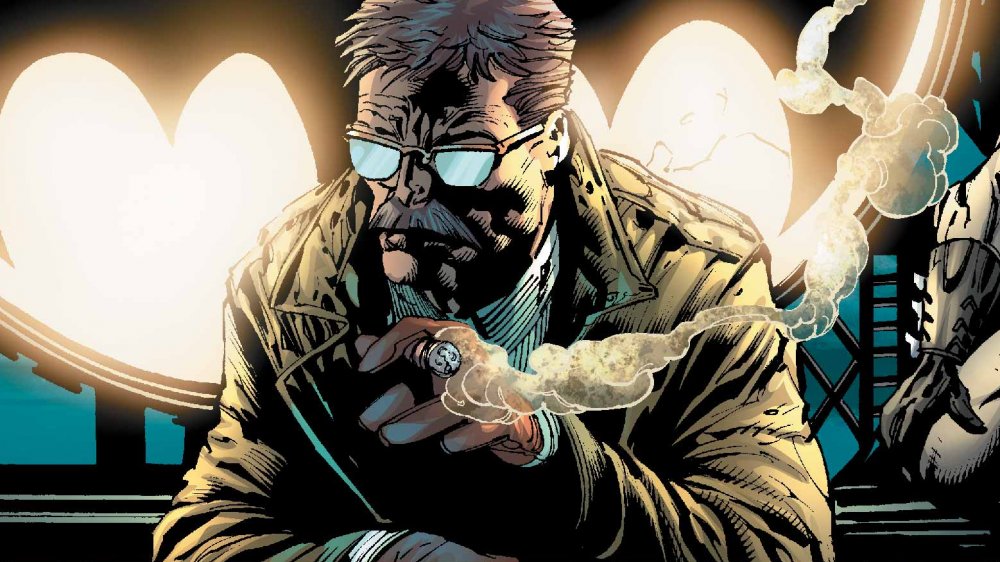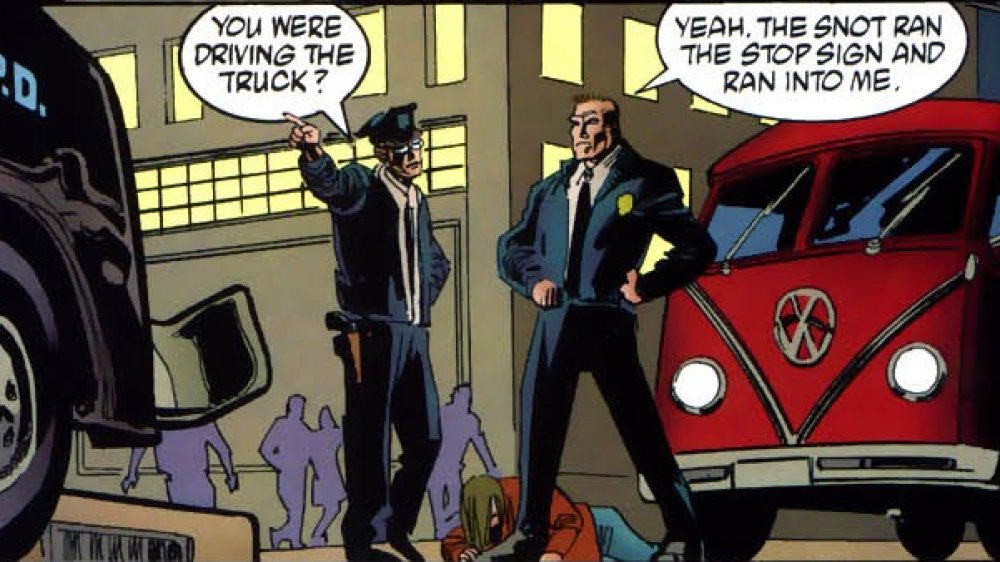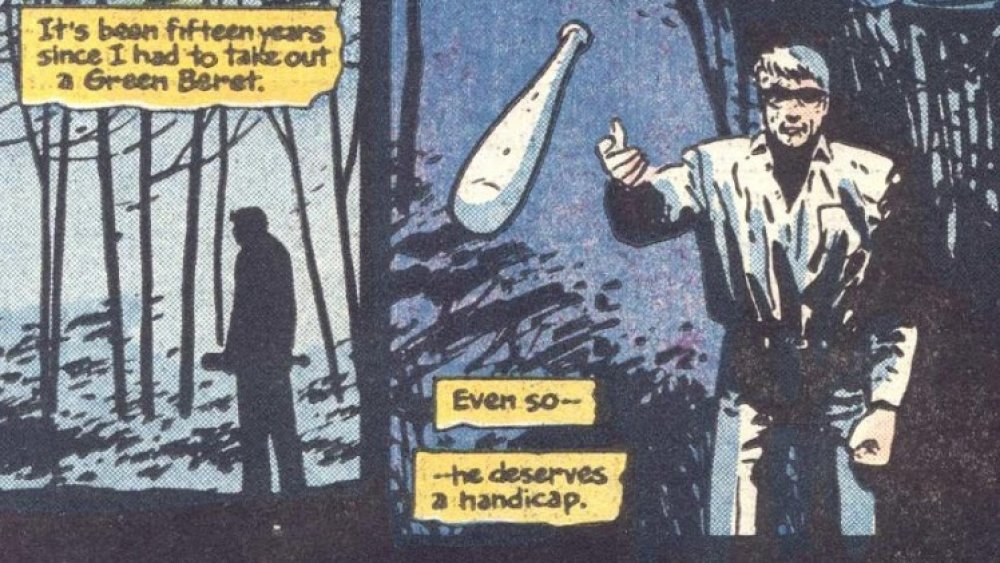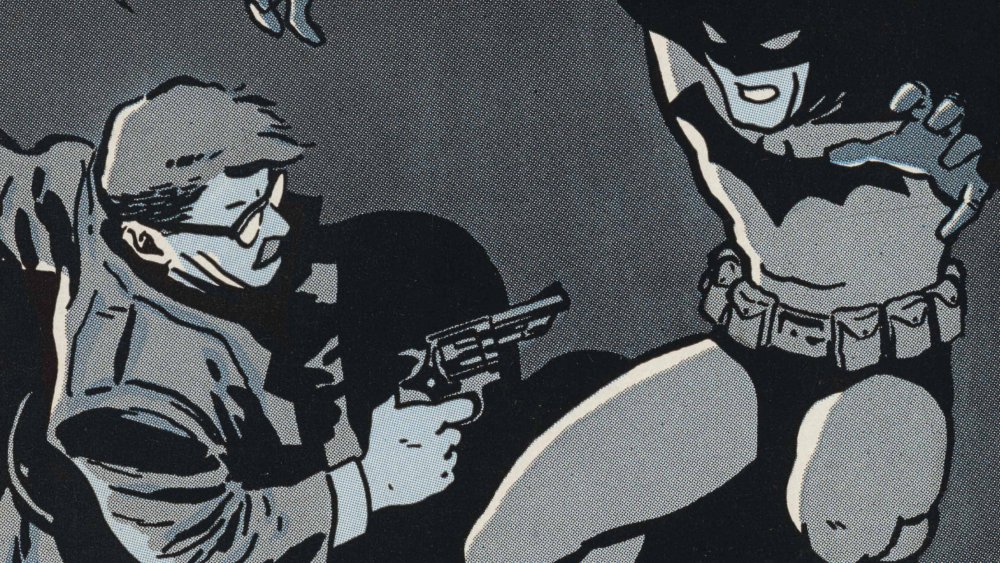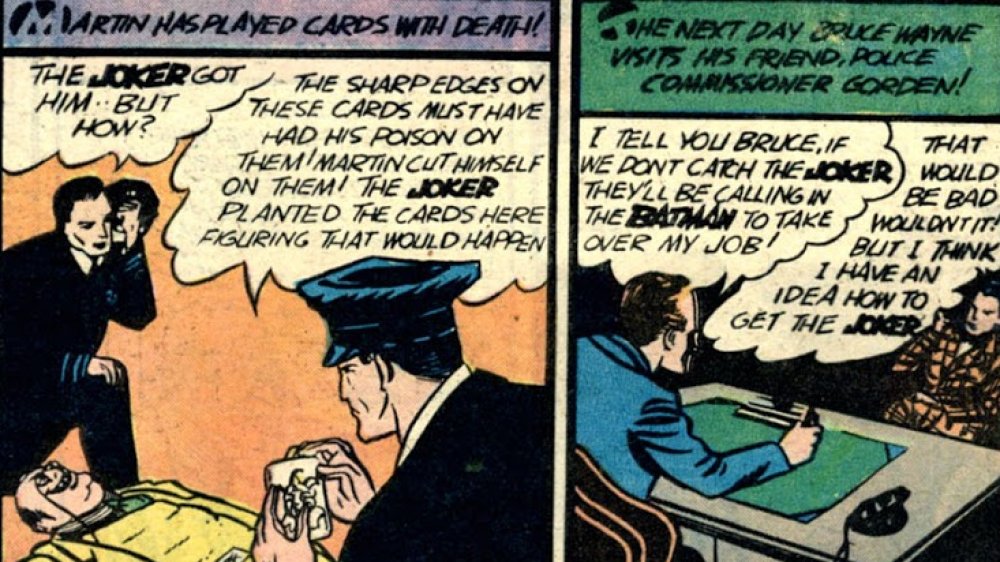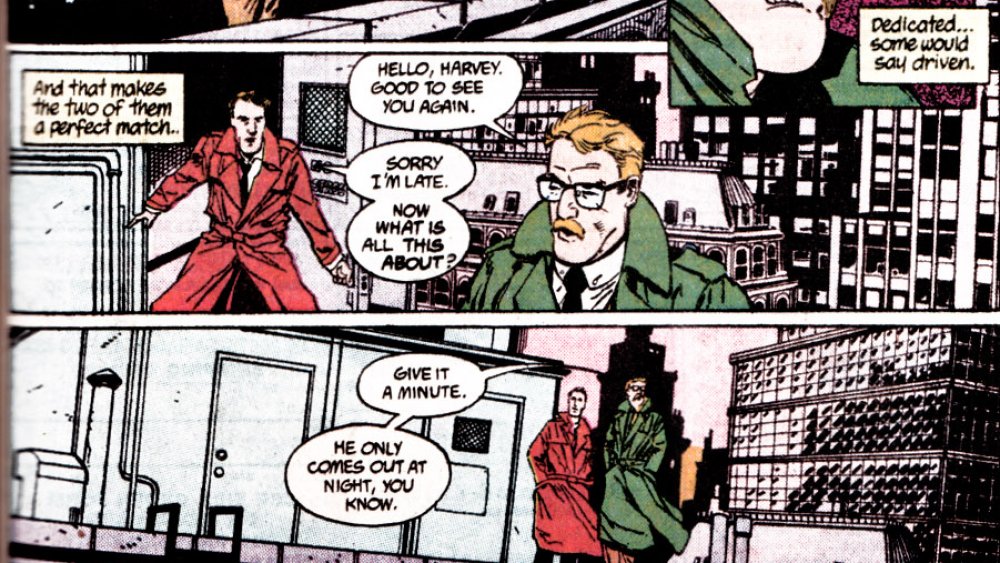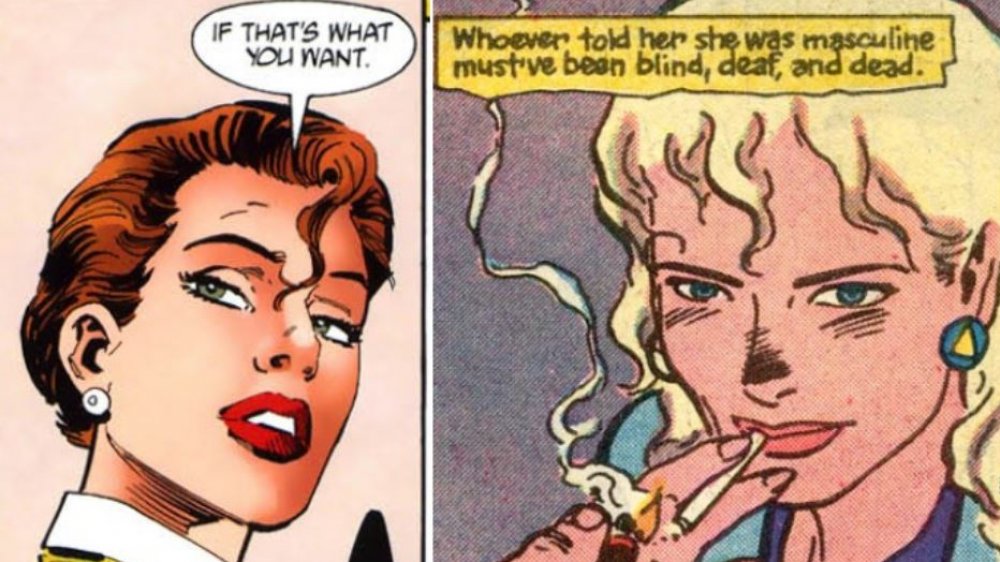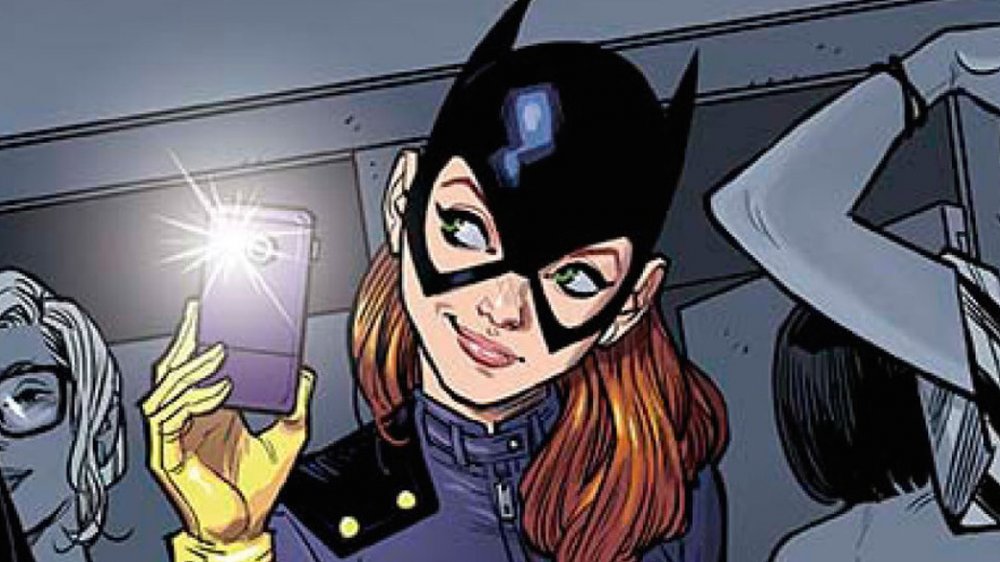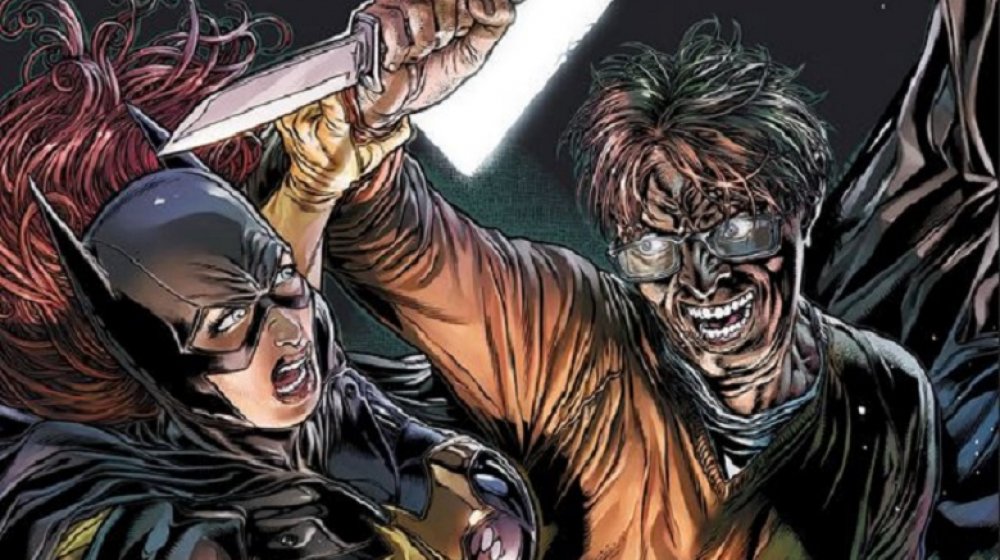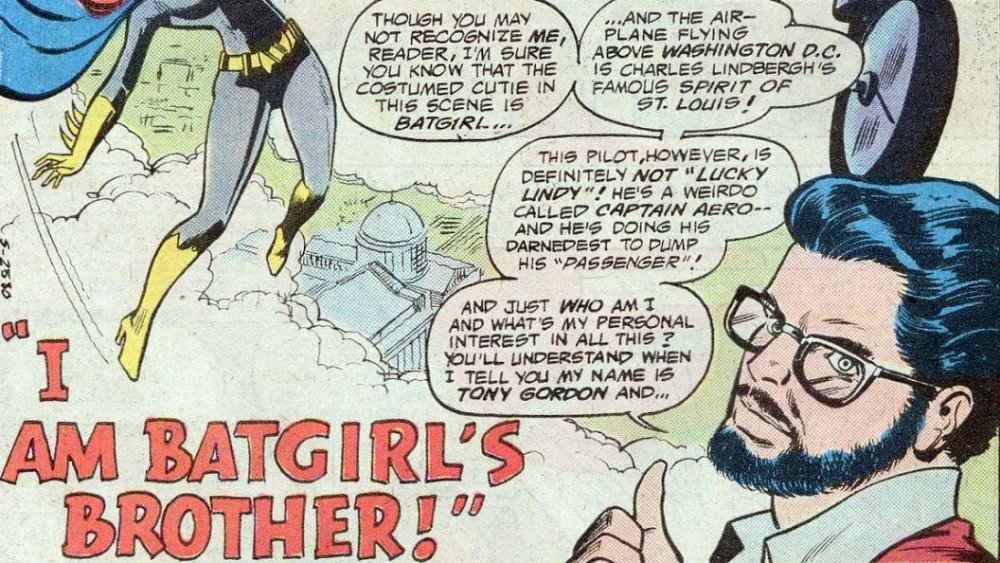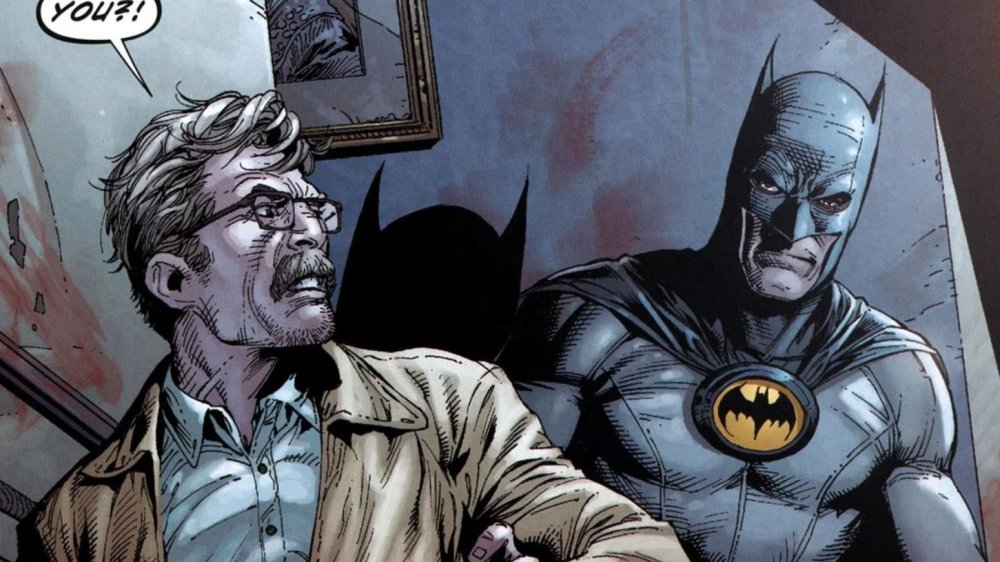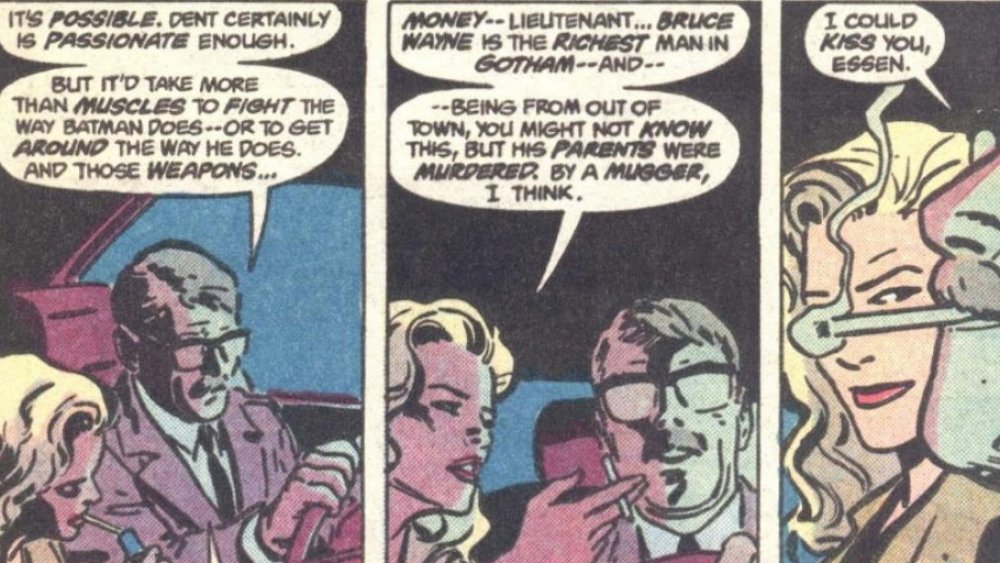Commissioner Gordon's Entire Backstory Explained
Throughout the years, Batman has cultivated a reputation for preferring to work alone, only making rare exceptions for the occasional Robin or Batgirl. However, Batman wouldn't be capable of executing his many complex missions without tireless assistance from several trusted sources. James Gordon of the Gotham City Police Department is one of the few honest men on the force, and one of Batman's most important allies. In fact, Gordon has been on Batman's side from the very beginning: The two characters both debuted in Detective Comics #27, making him Batman's first and longest-running supporting character. Together, they've accomplished far more than they could have on their own, rooting out crime and corruption in Gotham while also staying true to their own moral compasses.
Gordon is one of very few people Batman also considers a friend, often receiving guidance and insight from him during their late-night rooftop discussions beside the Bat-Signal. Despite this, it's easy to overlook James Gordon as a minor player in a larger drama. On the contrary, he has a fascinating and complex backstory — one that starts in a big city other than Gotham, and intertwines with the backstories of other iconic DC characters, including the Joker, Two-Face, and Batgirl. This is everything you need to know about Gotham's top cop, James Gordon.
Windy City origins
Long before he was police commissioner in Gotham City (and grew an epic mustache), Gordon made a name for himself as an upstart in the Chicago Police Department. Depending on which story arc you read, Gordon is either a native of the Windy City itself, or a Gotham transplant who ultimately returns home after many years away.
In either case, while training and working in the CPD, Gordon becomes intimately familiar with pervasive levels of corruption among his fellow police officers and elected officials. This period of Gordon's life is examined in the self-contained four-issue mini-series Gordon of Gotham. It's an enlightening prequel to Batman: Year One, and highlights the origins of Gordon's unconventional policing style, along with his implacable honesty and the toll both have on his professional and personal lives.
Readers learn that even then, Gordon's extensive, unpredictable hours on the job were putting a strain on his marriage to Barbara Kean, with whom he was struggling to conceive their first child. These insights paint him as a relatable, multi-dimensional figure who is much more than just the guy who switches on the Bat-Signal.
A military man
James Gordon is one tough dude. Prior to his work on the police force, Gordon served in the United States military, and was trained in hand-to-hand combat. Considering Gordon has been part of the Batman mythos for more than 80 years, the actual war in which he served varies, depending upon the story's publication date. Going back to his initial appearance in 1939 places him as a veteran of World War I, while more recent storylines suggest Gordon was a Vietnam vet. Regardless of which war it was, Gordon's martial prowess was already well-honed by the time he joined the police force in Chicago.
His mettle has been tested many times throughout his career, but one of his more memorable combat moments can be glimpsed in his early days in the GCPD. In the pages of Batman: Year One, Gordon faces off against a former Green Beret with just his bare hands, and comes out on top, even after gifting his opponent a baseball bat to even the odds.
The Bat and the cop
Bruce Wayne and James Gordon's origins intertwine in Batman: Year One. After training abroad for more than 12 years, Bruce Wayne returns to Gotham City, ready to start life as a vigilante. Meanwhile, James Gordon transfers from Chicago to Gotham, seeking a fresh start after harrowing experiences within the CPD. From the moment he arrives in Gotham City, however, Gordon is made painfully aware of the fact that leaving Chicago doesn't mean he's escaped greed and ineptitude. Gordon experiences a very Training Day-esque introduction to the pervasive corruption of the GCPD when he witnesses his partner assault a teen without cause or any fear of repercussion. Gordon focuses on purging corruption from the force, but that very corruption fiercely opposes him every step of the way. He quickly finds himself shackled by the very system he is trying to improve.
This futile struggle causes Gordon to realize he can't clean up Gotham alone — he needs to seek help from outside the GCPD. He and Batman are very different men using completely different tactics, but they're united in their shared goal: Purging Gotham of corruption, and making it a place where little boys can walk safely home with their parents at night.
On the Joker beat
Much like James Gordon, the Joker mirrors Batman — only he's the superhero's greatest enemy, rather than one of his strongest allies. When Bats got his own comic book series in 1940, the Joker was the first villain to make an appearance. More than eight decades later, the Bat and the clown are still battling it out.
Gordon has pursued the Joker right alongside Batman throughout the years, ever since he was assigned to oversee the first Joker case in Batman #1. A darker rendition of this origin can be found in the beautifully illustrated Batman: The Man Who Laughs, which is quintessential reading for any DC fan. The novelty and horror of the Joker's initial crimes further reinforce Gordon and Batman's blossoming relationship, and by working together, they're able to take down the psychopathic clown. Unfortunately, the Joker never stays out of the picture for long, as Gordon learns to his peril.
Harvey Dent's colleague
Before he was transformed into the villain known as Two-Face, Harvey Dent was a handsome, popular member of Gotham's upper crust. He was also a talented district attorney with a reputation for honesty, which earns him the friendship and confidence of both James Gordon and Batman. At the time, the two are still in their collaborative infancy, and learning to trust one another. It is partly due to their mutual friendship with Dent that Gordon and Batman recognize the potential that lies between them.
Unfortunately, Dent's incorruptibility creates numerous enemies, which ultimately leads to his downfall and transformation into Two-Face. As seen in Detective Comics #66, and further expanded upon in Batman Annual #14, mob boss Sal Maroni throws acid in Dent's face mid-trial in a cruel act of retaliation, leaving him physically disfigured and mentally broken.
After further investigation into Dent's history, Gordon and Batman learn he has a troubled past, marred by abuse from an alcoholic father, and a schizophrenia diagnosis. He's been able to contain his illness through his legal studies, but his disfigurement pushes him over the edge. In an interesting twist, Gordon plays Dent's split personalities against each other while he's on trial in the cataclysmic story arc No Man's Land, using Dent to cross-examine Two-Face and win an acquittal for Gordon. And yes, it's as confusing and odd to witness as it sounds.
A tale of two wives ... or three?
Gordon's personal life has been deeply affected by his line of work. Long hours, stress, and job hazards like criminals coming to your house seeking revenge, are not conducive to a healthy home life — something Gordon's first wife learns the hard way. Barbara Eileen Kean initially appears in World's Finest #53, which notes that the two married in 1926. She sticks with Gordon as he launches his career, moves with him from Chicago to Gotham, and bears his first child.
Tragically, the majority of their marriage is marred by Gordon's stressful police work. This is further compounded by an affair he has with a fellow detective, Sarah Essen. Although James and Barbara do their best to seek healthy resolution through marriage counseling, they ultimately divorce, and Barbara takes their firstborn with her. Gordon then rekindles things with Sarah, and the two eventually marry. She is ultimately murdered by the Joker during No Man's Land.
In some storylines, however, Gordon never remarries after his divorce. Such differences in various subplots can be incredibly confusing, and attempts to consolidate them via the DC multiverse can make them even more so. One example of this retconned confusion ties directly into Gordon's family life: Technically, he's had three wives, but one was erased from existence in Crisis on Infinite Earths (mostly). As so many comics fans have had to learn, sometimes, you just have to go with whatever the canon says.
The cop who fathered a vigilante
Gordon's work as a detective has a major impact on his daughter, Barbara. She spends many late nights next to her father, analyzing data and helping him piece clues together. The natural gift of a photographic memory aids Babs in her analysis and studies, and by the tender age of 16, she's ready to enroll in college. To say she's a go-getter is a severe understatement — she even runs for Congress in one 1970s storyline. It is also during this time in her life that Babs has a fateful encounter. Late one night, she spies Batman seeking out her father's insight. This has a profound effect on Babs, as she's idolized superheroes like Batman her whole life.
She decides there and then that she'll become just as great as Batman, and structures her whole life around accomplishing that lofty goal. Not only does Babs succeed in becoming the amazing hero known as Batgirl, she persists even after being paralyzed by the Joker, becoming the tech guru known as Oracle. Babs' indomitable spirit is inspiring, and it comes in no small part from the upbringing she got from her dad.
A supervillain son
You probably already knew that James Gordon is Batgirl's dad, but you might not know that he also fathered a murderous psychopath. Before Babs was born, James and Barbara welcomed a son into the world, named James Jr. Names are the only thing father and son have in common: James Jr. displays disturbing sociopathic tendencies as a young child, including mutilating animals. These inclinations trouble his parents, who work together to manage his mental health, despite the fact of their separation. Babs is particularly disturbed by her brother's behavior, believing he's the reason behind a childhood friend's unresolved disappearance. James Jr. steps out of his family's life for a period of time while traveling abroad, only to return years later, claiming his issues have been resolved with the use of an experimental medicine that induces a sense of empathy within him.
Unfortunately, James Jr. begins viewing empathy as a weakness, and dilutes his prescription to nullify its effects. Once rid of those pesky feelings, he fully embraces his dark side, launching a horrific spree of murder, torture, and disfigurement from which no one is safe — not even his own family. After brutalizing Barbara in horrific Joker-like fashion, James finally realizes his son is beyond saving, and takes him to Arkham Asylum after an epic showdown on a bridge. Suddenly, real-world family issues don't seem so bad.
Super-spy connections
Deeper exploration of the DC universe brings all sorts of obscure facts to light. Before bringing Babs or James Jr. into the world, James Gordon had another son named Anthony, with his first wife, Thelma — who is sometimes listed as his sister, depending on the source material, but thankfully, never at the same time. Tony Gordon is initially introduced way back in 1951's World's Finest Comics #53, the same issue introducing Barbara Kean, not Thelma. It's completely understandable if you're confused at this point: In this continuity, Barbara is James' first wife and Tony's biological mom, however, this is retconned when Tony is re-introduced as an adult in 1977's Batman Family #12. It's comics, nothing makes sense, just roll with it.
Regardless of his parentage, Tony grows to become a world-renowned spy, which requires he take on a new identity and cut himself off from his family and friends. He later reconnects with his sister, Batgirl — a reunion that is cut short when Tony tragically dies while saving her from a mutual foe in Detective Comics #482.
Gordon and Batman, together forever
Any relationship is bound to change with time, and Gordon's connection to Batman is no exception. In classic material, such as Golden and Silver Age comics and the 1960s Batman TV show, Gordon fully trusts Batman. Sometimes, he's even portrayed as dependent, to the point of marginalization as a mere button-pusher. This aspect of their relationship is brilliantly parodied in The Lego Batman Movie, which nails many Bat-tropes with astoundingly hilarious accuracy. When Chief O'Hara asks Gordon how they will handle countless villains running amok, he replies, "The only thing we ever do: Flip the switch to the Bat-Signal!" Brutal, but sometimes true.
In most modern story arcs, however, Gordon is often skeptical of Batman's vigilante methods, and hesitant to work with a guy dressed as a bat. Over time, however, Gordon learns to trust Bats and comes to recognize the necessity of his role in Gotham. A mutual respect develops, and eventually, a friendship.
He probably knows Batman's true identity
Considering Gordon is one of Gotham's finest detectives, plus the fact that he's been working with Batman for years, one has to wonder why he hasn't figured out who's behind the cowl. Numerous times, Gordon has gotten within a hair's breadth of solving the puzzle: He's seen Batman's uncovered face up close (albeit, without his glasses), found clues that could lead to his identity, and even been told point-blank who Batman is. In Batman: Year One, while remarking upon the vast resources required to maintain Batman's endless arsenal of gizmos and gadgets, Detective Essen correctly extrapolates that Bruce Wayne must be Batman. No wonder Gordon falls for her.
Bats has actually tested Gordon's desire to learn the true nature of his identity, leaving breadcrumb trails of planted clues as a way to gauge his trust. However, every time Gordon has the opportunity to learn the truth about Batman's identity, he chooses not to pursue the matter, or feigns ignorance, which further solidifies the bond he has with Bats. If he doesn't know who Batman is, he can't accidentally divulge that information, nor can it be forced from him. So long as Batman remains anonymous, he and Gordon can both continue trying to clean up a city that seems to want to stay dirty. Now that's partnership.
